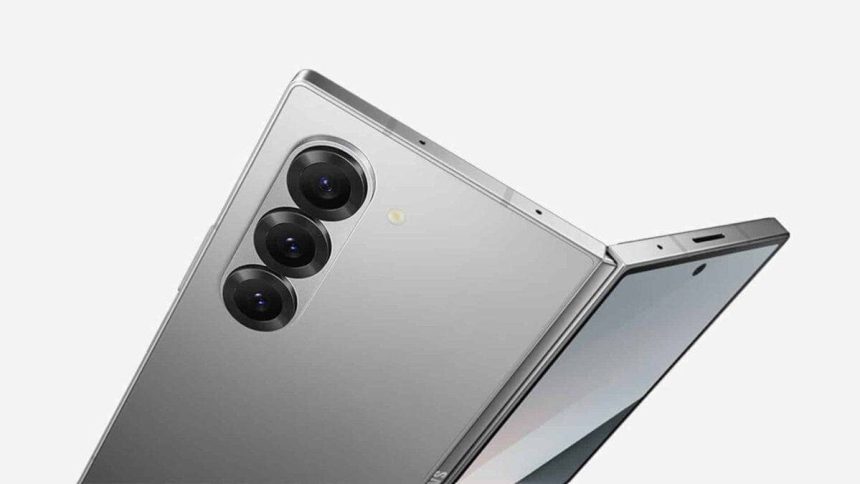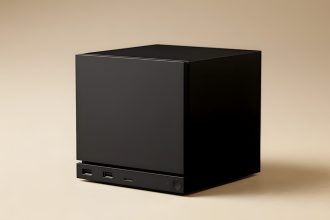At the Galaxy Unpacked event in New York, Samsung showcased the Galaxy Z Fold7, the latest iteration in its flagship foldable smartphone line. Long-time followers of Samsung’s journey into foldables will recognize the familiar pattern: enhanced screens, improved cameras, and sleeker designs—continuing this year with no departure from these trends. However, the significant question arises: is this a genuine innovation or merely a refinement? Let’s delve into the details.
A Bigger, Brighter Display—Inside and Out
When unfolded, the Z Fold7 boasts an impressive 8-inch Dynamic AMOLED 2X display, which, according to Samsung’s metrics, is 11% larger than its predecessor, the Fold6. The phone retains the 1–120Hz adaptive refresh rate, ensuring smooth transitions whether scrolling through social media or editing videos. The cover screen, now 6.5 inches and FHD+, also features a 120Hz refresh rate and a 21:9 aspect ratio, making it more functional than last year’s version. Samsung recognizes that many users engage with the device while it is closed as much as when it is open.
Brightness is a standout feature, reaching a peak of 2600 nits, allowing users to comfortably read outdoors without straining their eyes.
Powering the Device: A Subtle Performance Upgrade
Internally, the Fold7 is equipped with Qualcomm’s Snapdragon 8 Elite for Galaxy, replacing the previous Gen 3 chip. This transition is not just a marketing gimmick; it brings tangible improvements, particularly in multitasking and AI capabilities. For everyday use, the phone feels more responsive, providing a smoother gaming experience, although the difference may not be stark under normal conditions.
A significant highlight is the introduction of a 200MP main camera—a first for the Fold series—paired with a 12MP ultra-wide and a 10MP telephoto lens featuring 3x optical and 30x digital zoom. This camera setup signals a serious step forward in mobile photography.
It is important to note, however, that an increase in megapixels doesn’t guarantee improved results, and the effectiveness of Samsung’s image processing in various lighting conditions remains to be seen. Additionally, the under-display camera has been replaced with a standard 10MP inner camera, which may not be revolutionary but proves to be more effective—a pragmatic adjustment.
A Folding Phone That Feels Less Bulky
Samsung continues to reduce the heft of its devices. The Galaxy Z Fold7 weighs a mere 215g, even lighter than the Galaxy S25 Ultra. When folded, its thickness is just 8.9mm and a mere 4.2mm when unfolded. The new Armor FlexHinge contributes to a sleeker feel in hand and has been redesigned with a multi-rail structure to minimize the visible crease.
The outer screen is safeguarded by Corning’s Gorilla Glass Ceramic 2, while the back is covered with Victus 2. The inclusion of a titanium plate within the foldable panel and 50% thicker Ultra-Thin Glass suggests Samsung is committed to addressing durability concerns. While it may not be indestructible, it is edging closer to feeling like a typical smartphone, enhanced further by its IP48 rating for water and dust resistance.
AI Integration: Ubiquitous but Not Always Needed
The latest iteration of Samsung’s operating system, One UI 8, is layered on Android 16 and incorporates a significant focus on AI features, some of which are notably useful, while others may feel excessive.
Features like Photo Assist allow users to easily erase or manipulate elements of a photo with a few taps. Tools such as Portrait Studio offer pet-specific adjustments, while Generative Edit provides auto-suggestions for modifications. While these features showcase clever technology, their necessity is debatable. The large screen highlights side-by-side editing, allowing creators to compare original and edited images in real-time. Another practical addition is the Audio Eraser, which effectively reduces background noise—a boon for content creators and remote workers alike.
Additionally, Samsung has introduced Gemini Live, a multimodal AI that enables users to inquire about on-screen content. While the potential is promising, the early implementation needs to be evaluated for genuine intuitiveness. The Knox Enhanced Encrypted Protection (KEEP) feature also emerges, targeting app-specific encryption with a focus on post-quantum cryptography—while not flashy, its significance cannot be overlooked.
Samsung Galaxy Z Fold7: An Overview
– Main Display: 8” QXGA+ Dynamic AMOLED 2X, 120Hz, HDR10+, 2600 nits
– Cover Display: 6.5” FHD+ AMOLED, 21:9, 120Hz
– Processor: Snapdragon 8 Elite for Galaxy
– RAM & Storage: 12GB/16GB RAM, 256GB–1TB UFS 4.0 storage
– Cameras: 200MP main + 12MP ultra-wide + 10MP telephoto (3x), 10MP front (x2)
– Battery: 4400mAh with 25W wired / 15W wireless / 4.5W reverse charging
– Additional Features: IP48 rated, Wi-Fi 7, Bluetooth 5.4, USB-C, Stereo speakers with Dolby Atmos
Should You Consider It?
The decision is multifaceted. The Samsung Galaxy Z Fold7 represents the pinnacle of refinement within the foldable market, with hardware that feels distinctly mature. While the software can occasionally seem overly complex, it offers significant utility in various aspects.
However, the price tag of $1,999 pushes it into the realm of luxury rather than pure functionality. Buyers are investing not only in a device but in a vision of the future—one where a folding display may finally feel commonplace. For some consumers, this evolution is indeed compelling enough to warrant the investment.Mobiles








